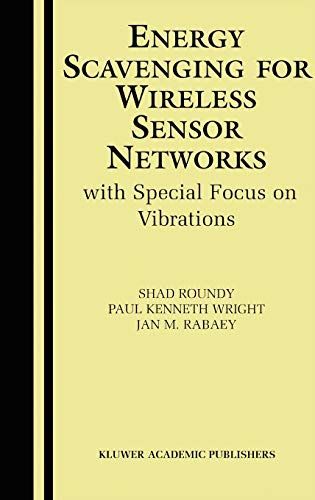
Energy Scavenging for Wireless Sensor Networks With Special Focus on Vibrations
The vast reduction in size and power consumption of CMOS circuitry has led to a large research effort based around the vision of ubiquitous networks of wireless communication nodes. The wireless devices are usually designed to run on batteries. However, as the networks increase in number and the devices decrease in size, the replacement of depleted batteries is not practical. Furthermore, a battery that is large enough to last the lifetime of the device would dominate the overall system size, and thus is not very attractive. There is clearly a need to explore alternative methods of powering these small communication nodes. This book, therefore, focuses on potential "ambient" sources of power that can be scavenged or harvested and subsequently used to run low power electronics and wireless transceivers. A wide range of potential power sources are briefly explored. Based on a comparison of these many potential sources, commonly occurring vibrations was chosen as an attractive, and little explored, power source. Models for different types of power converters using both electrostatic and piezoelectric conversion mechanisms have been developed. The models have been validated by testing prototypes driven at vibrations similar to those found in many industrial and commercial building environments. Finally, integration of a piezoelectric generator, power circuit, and custom design radio transceiver is demonstrated. Power sources are becoming a bottleneck to the widespread deployment of wireless sensor networks. This work reviews many potential alternative sources of ambient power that can be scavenged. Vibration to electricity converters are explored in great detail, and based on studies and experiments, are shown to be an attractive power source in many applications. Energy Scavenging for Wireless Sensor Networks with Special Focus on Vibrations will be of interest to researchers and professionals in the areas of wireless electronics, smart structures and MEMS as well as power electronics.